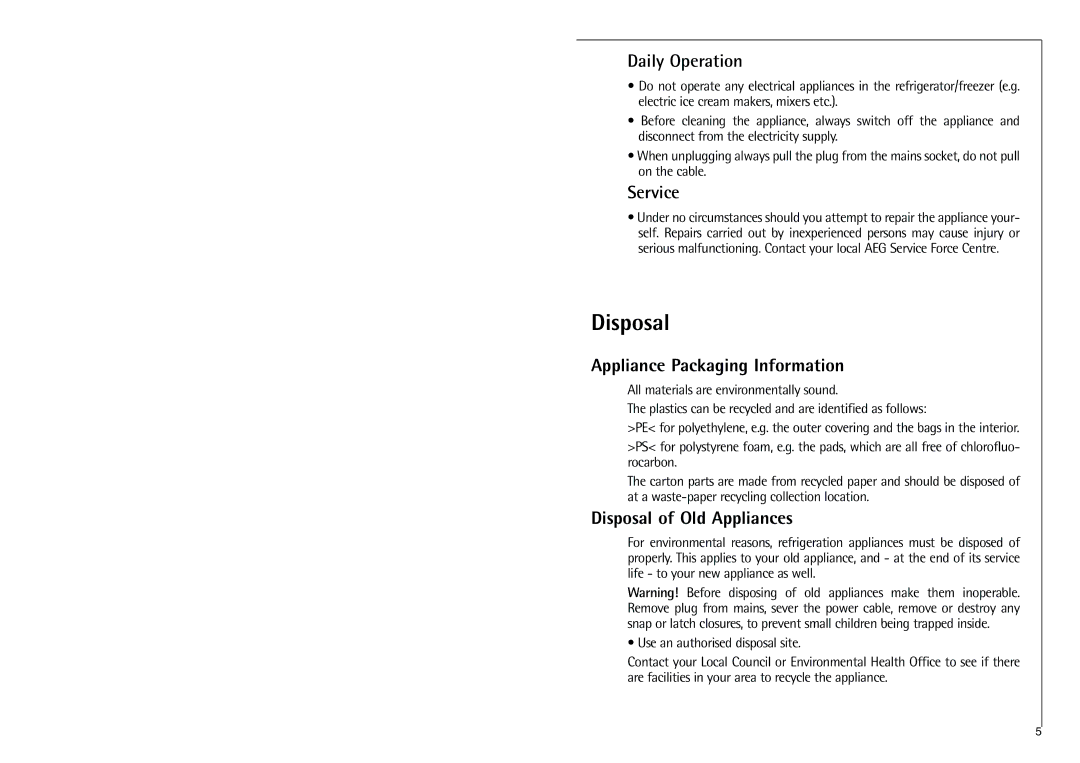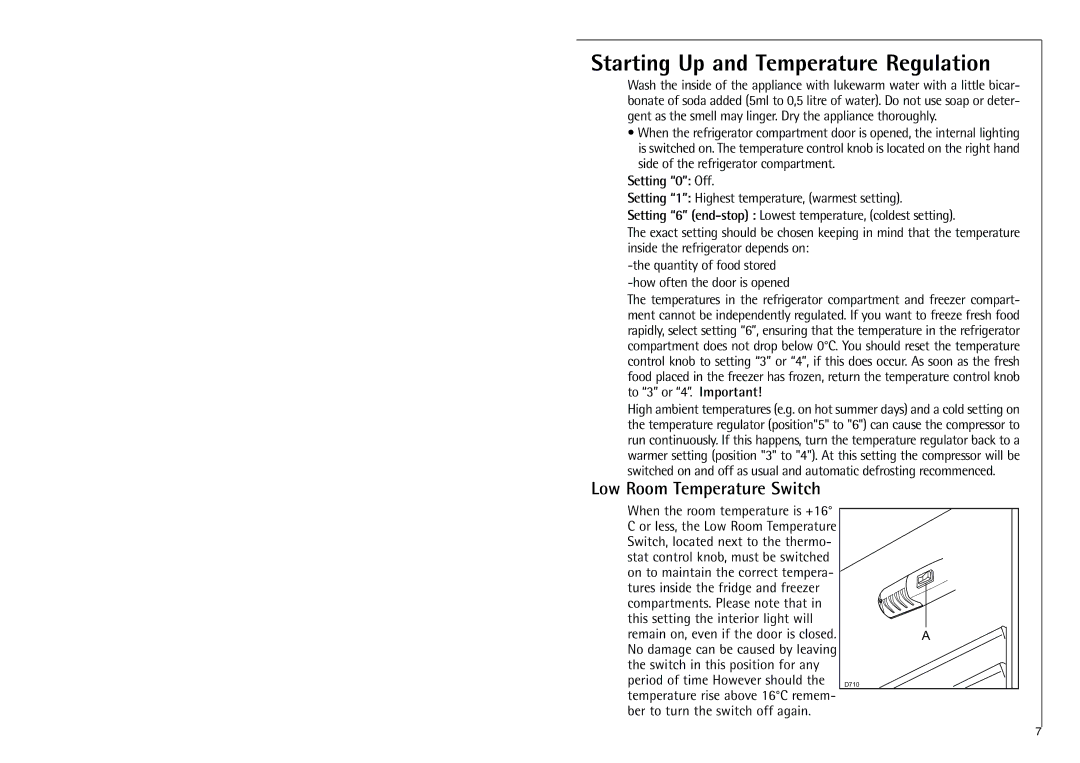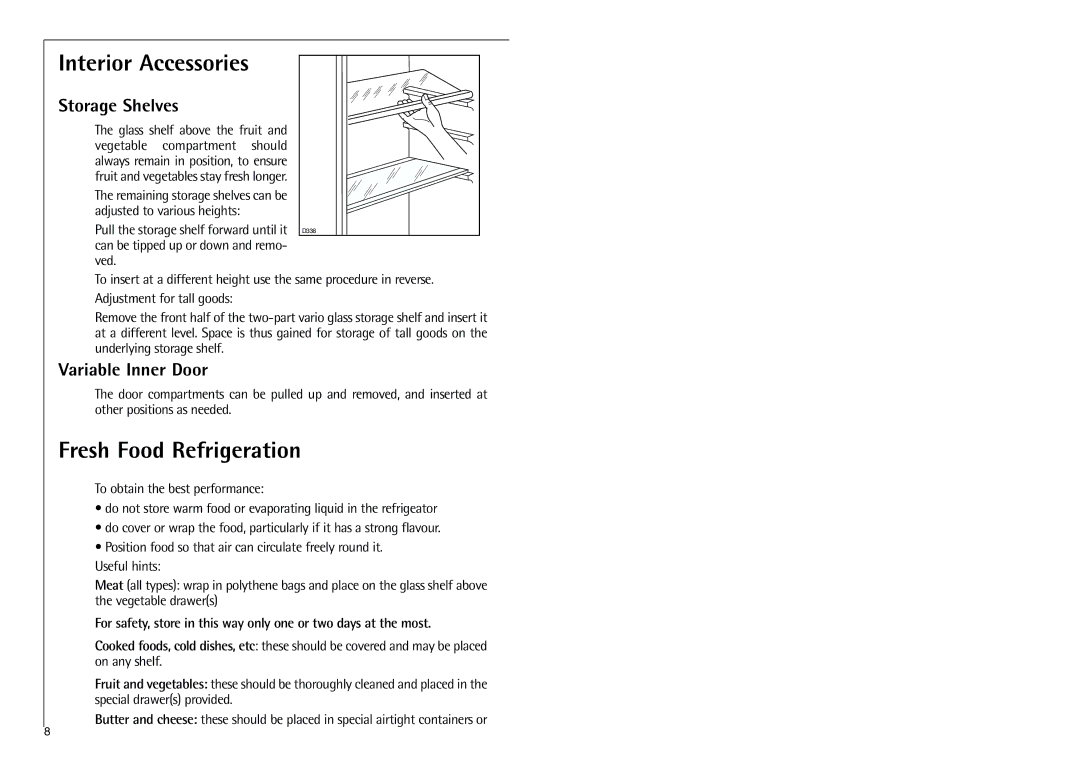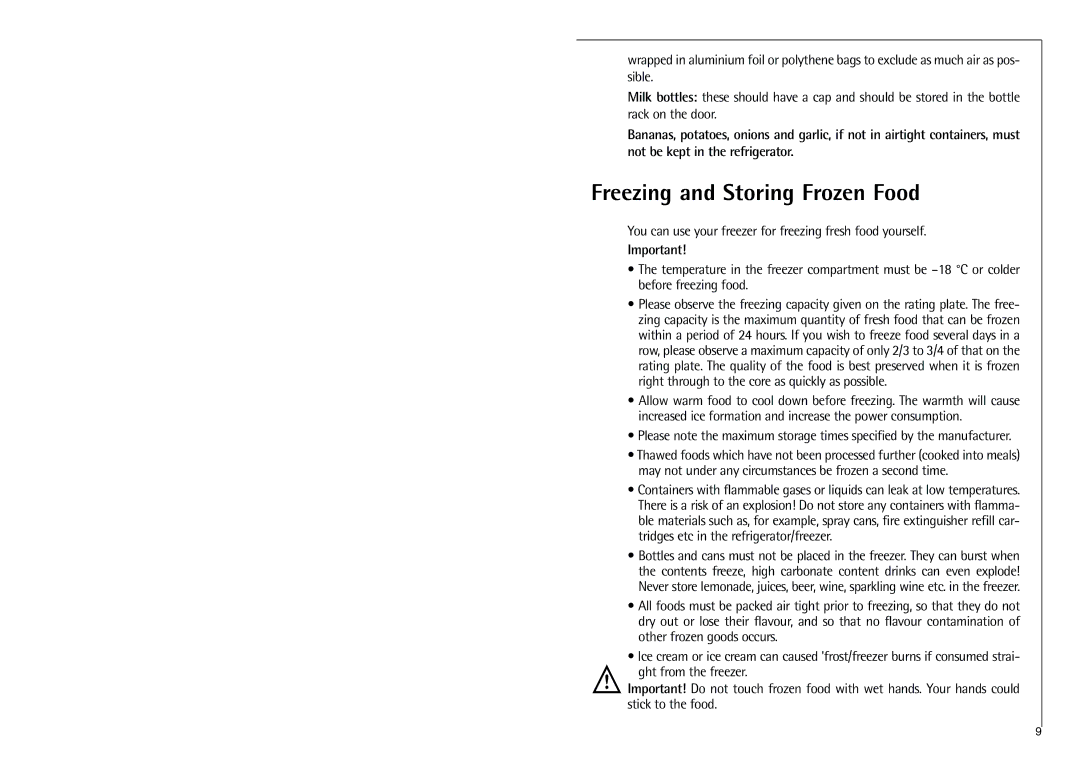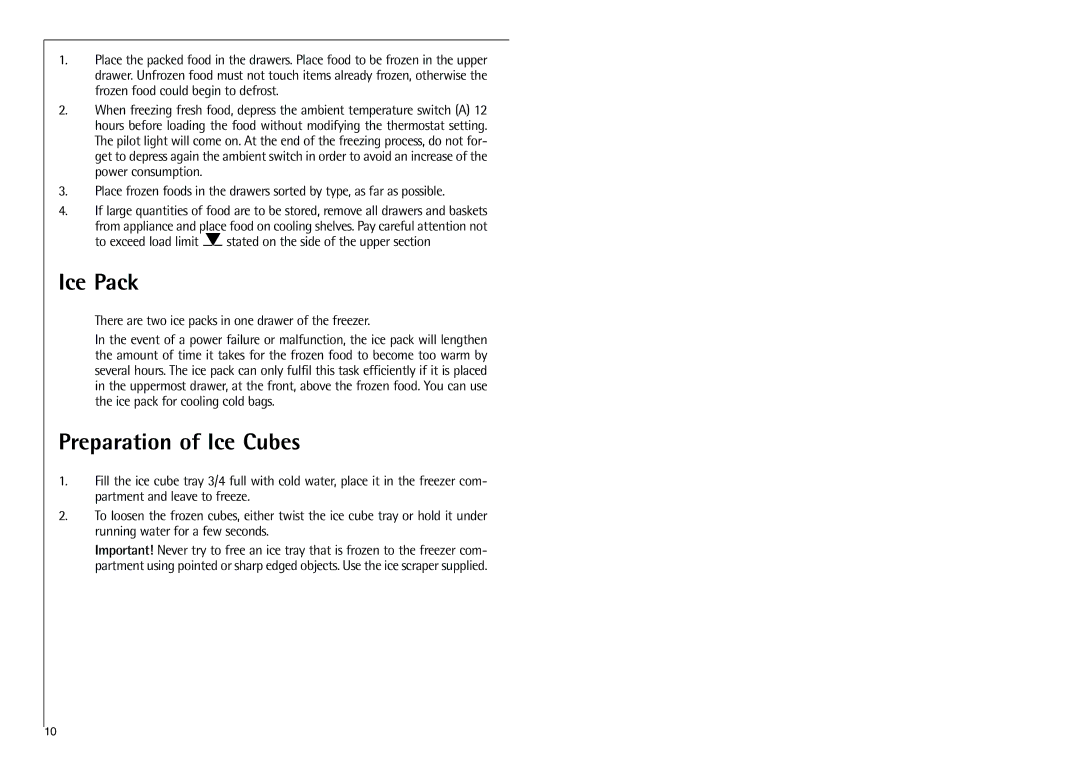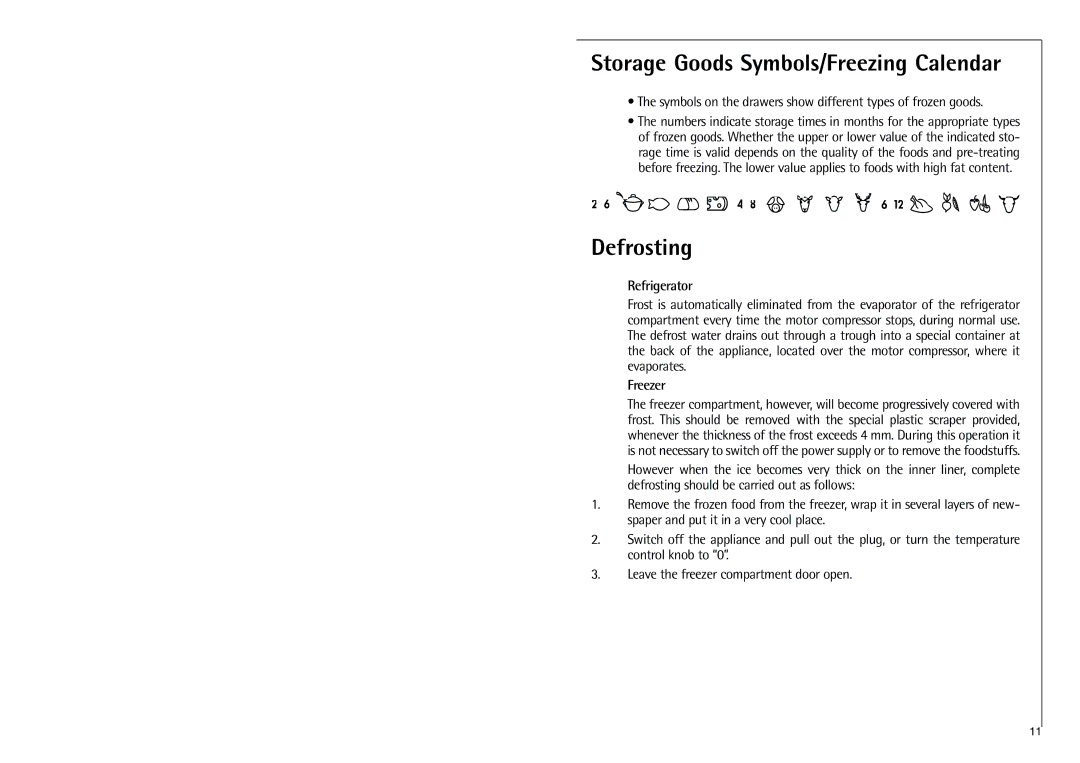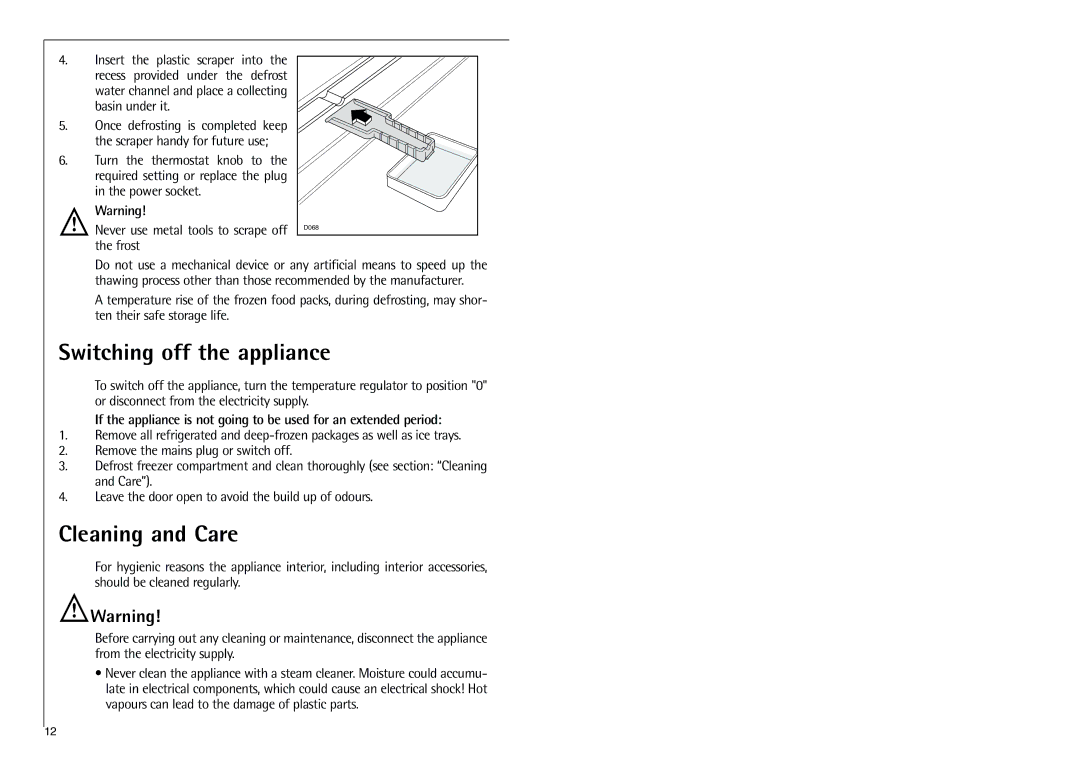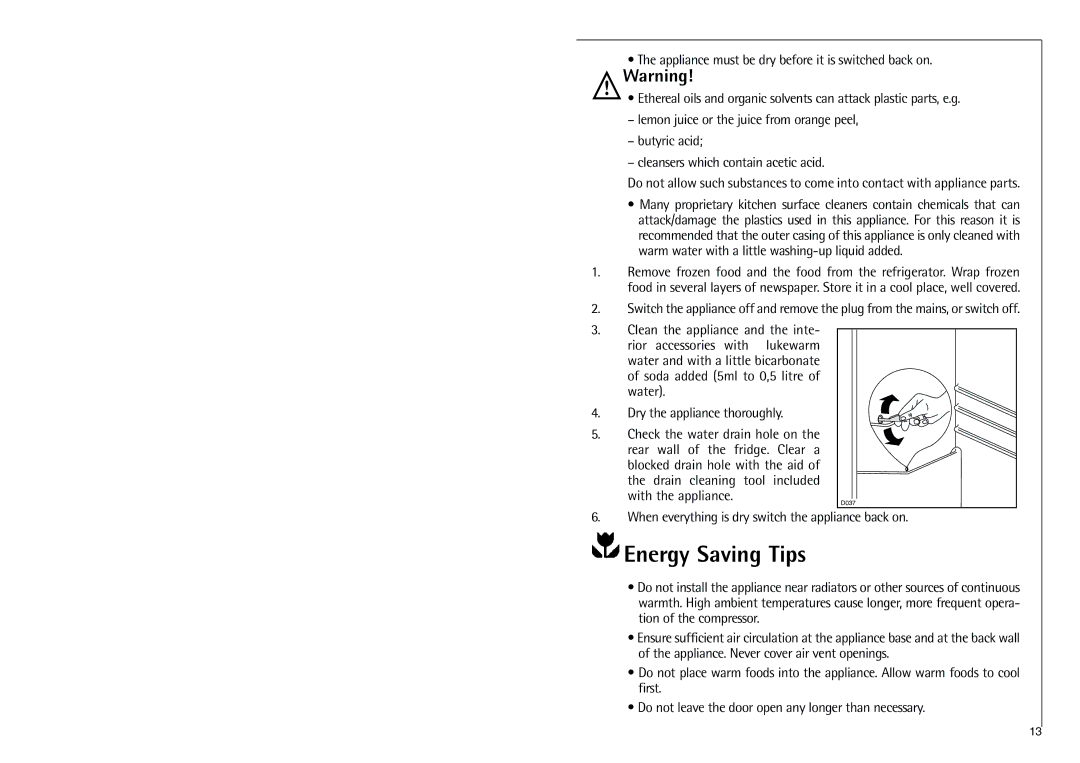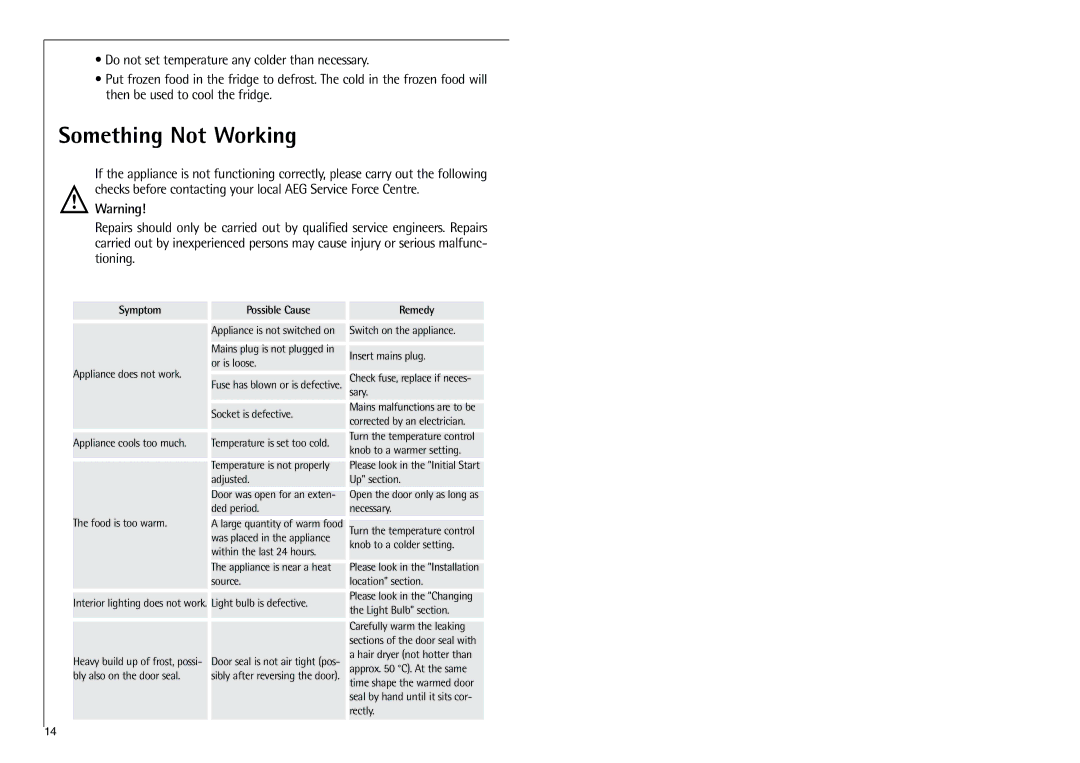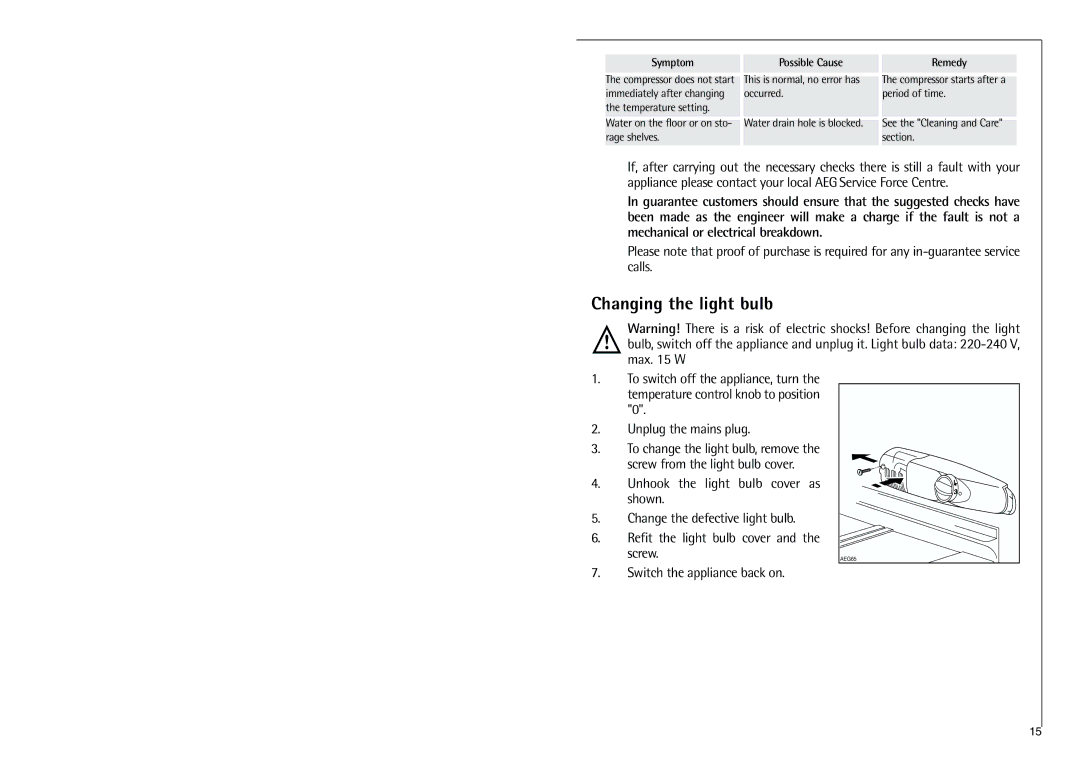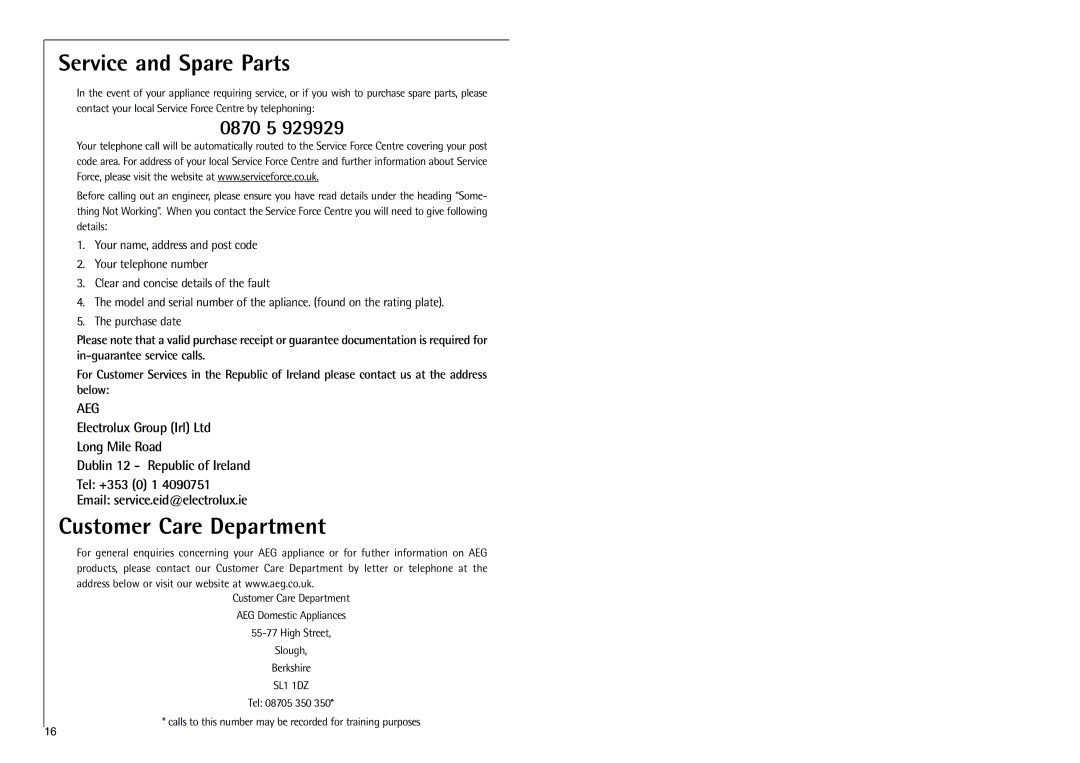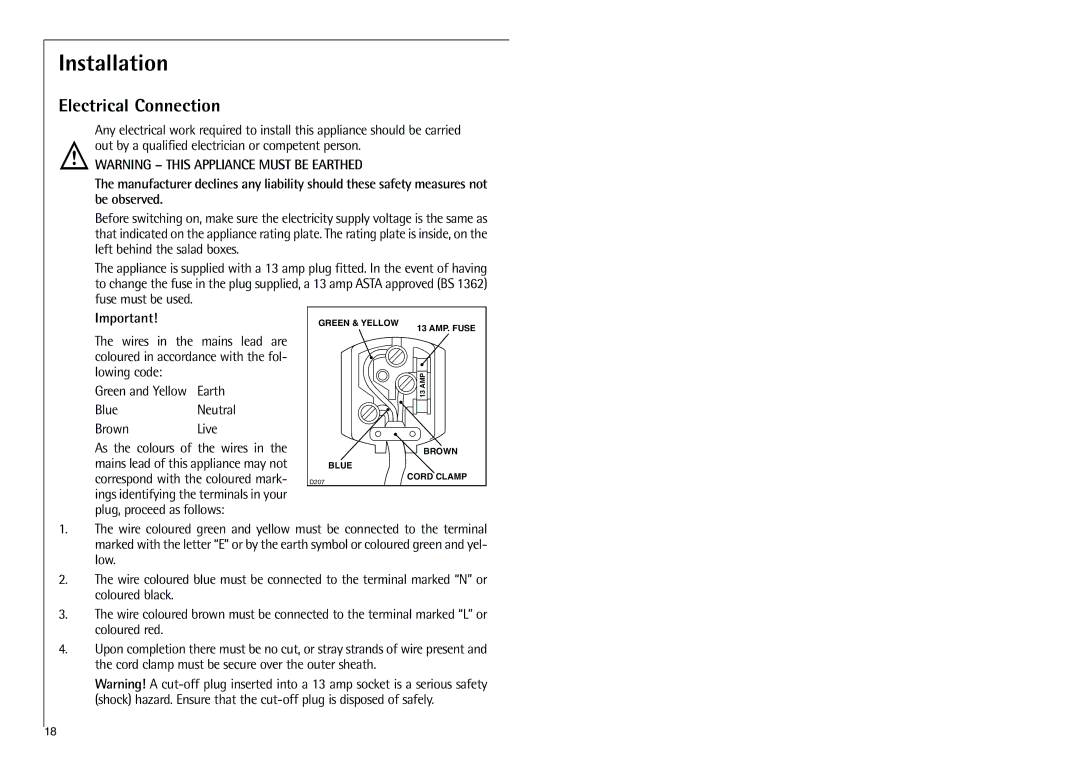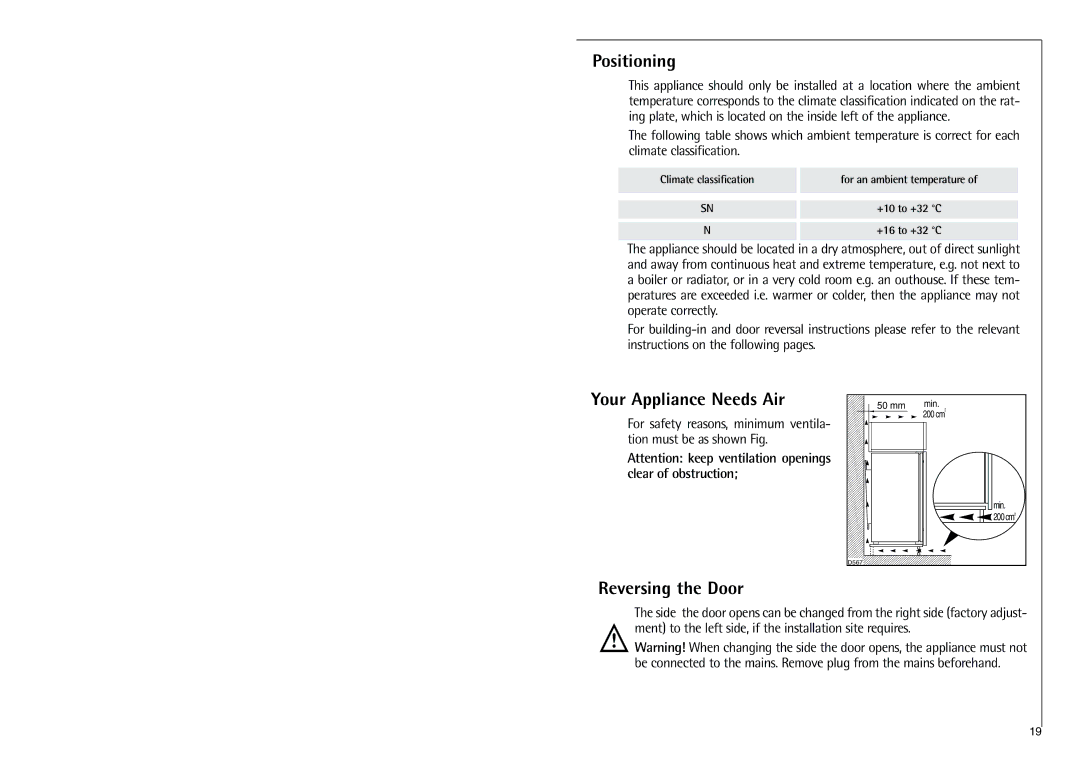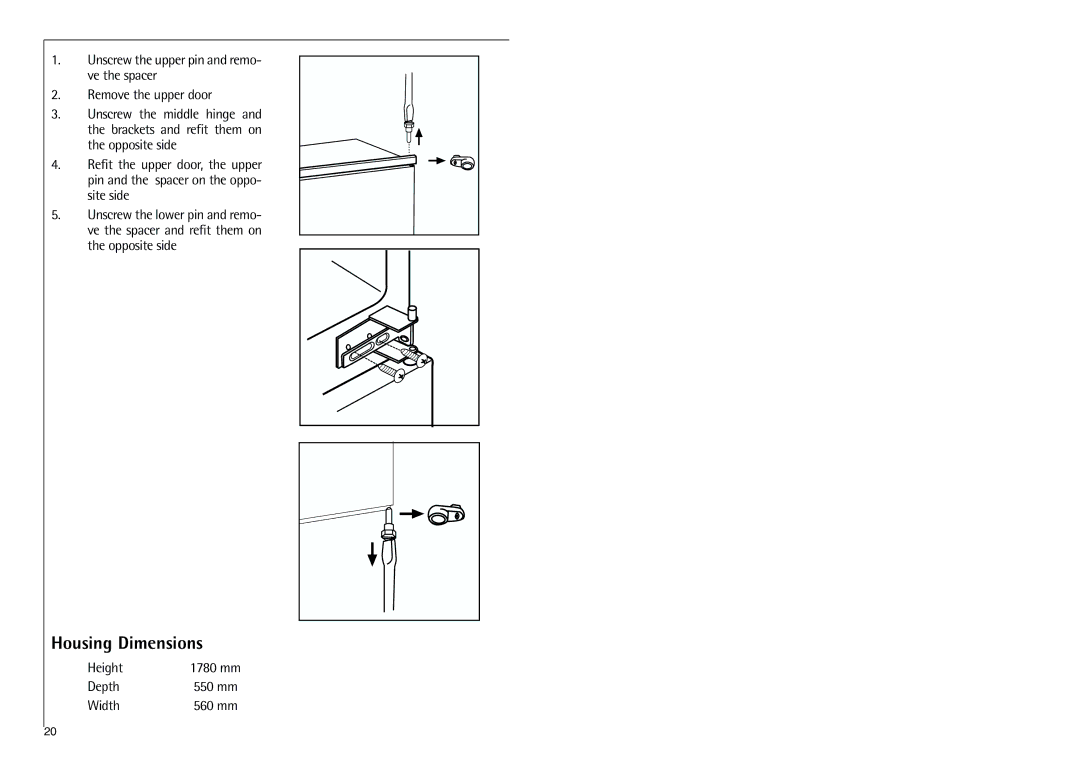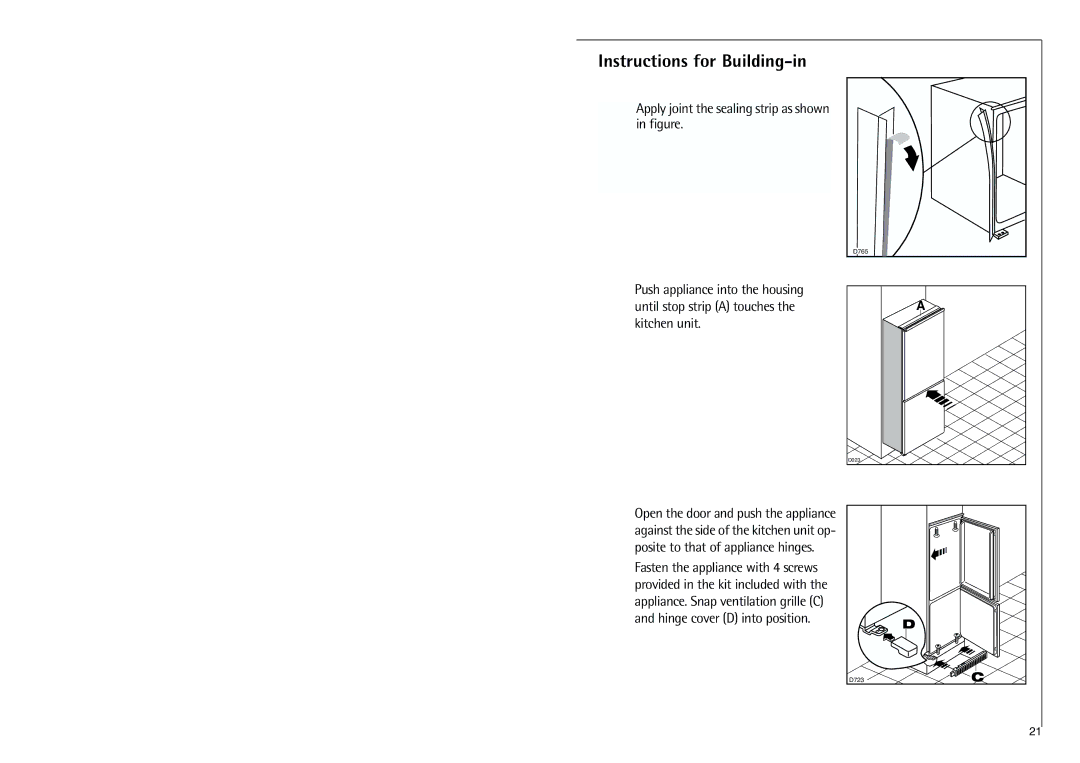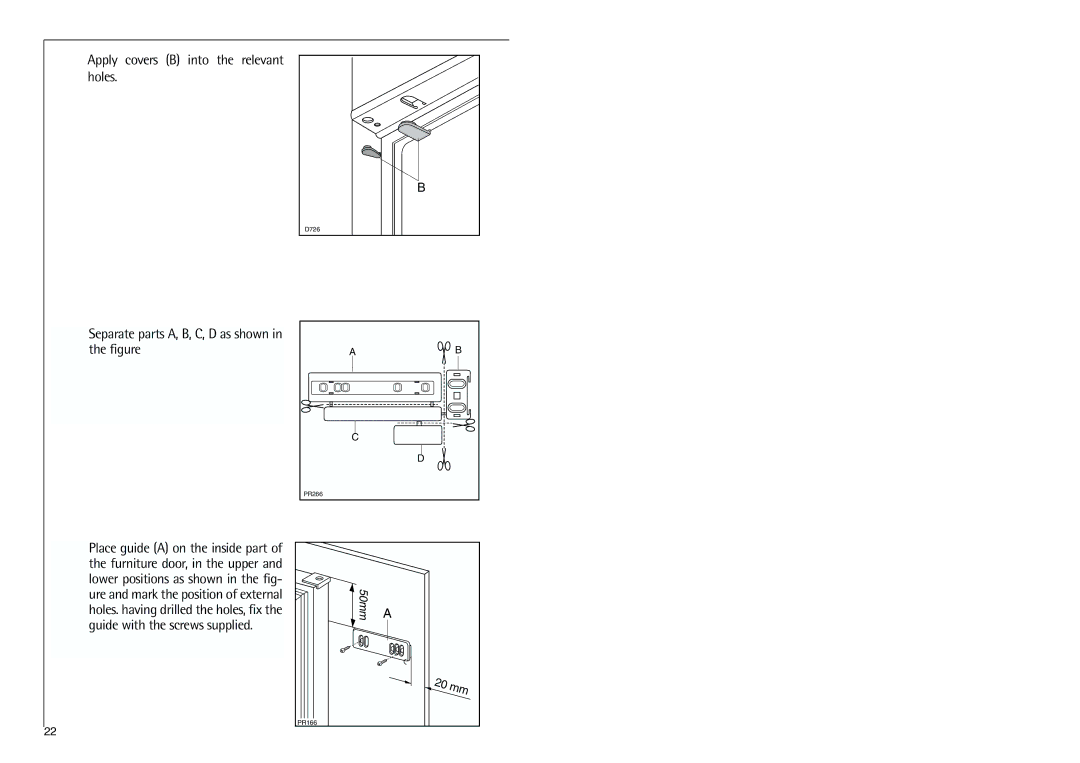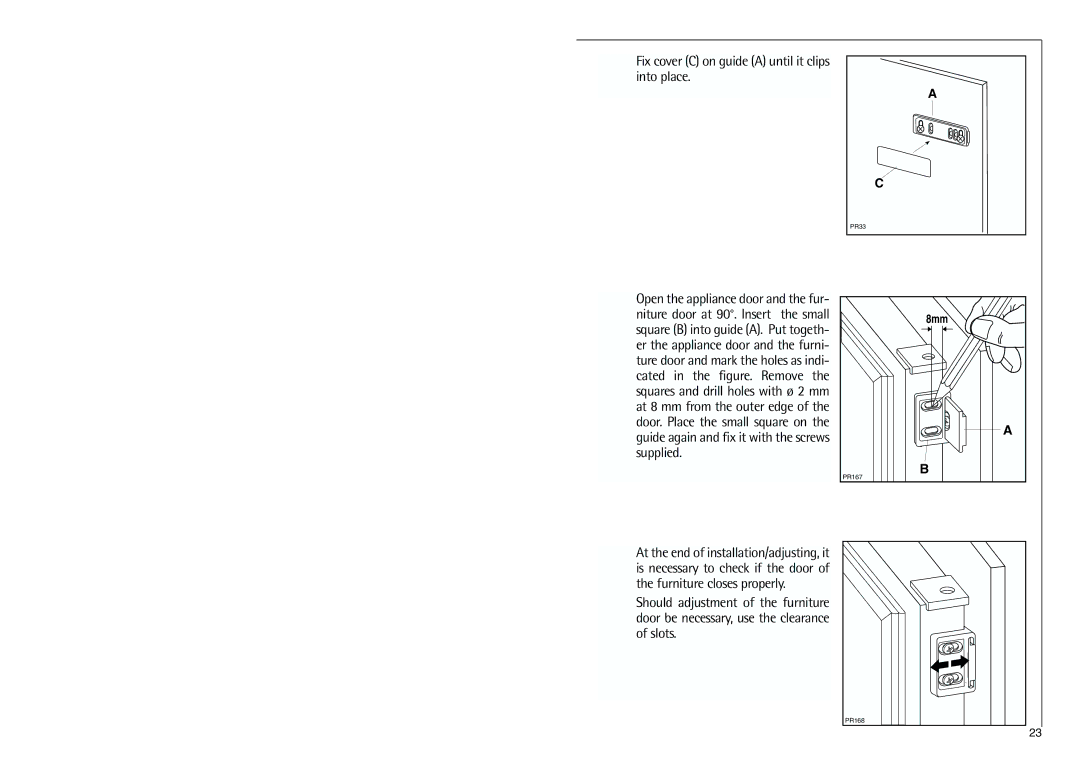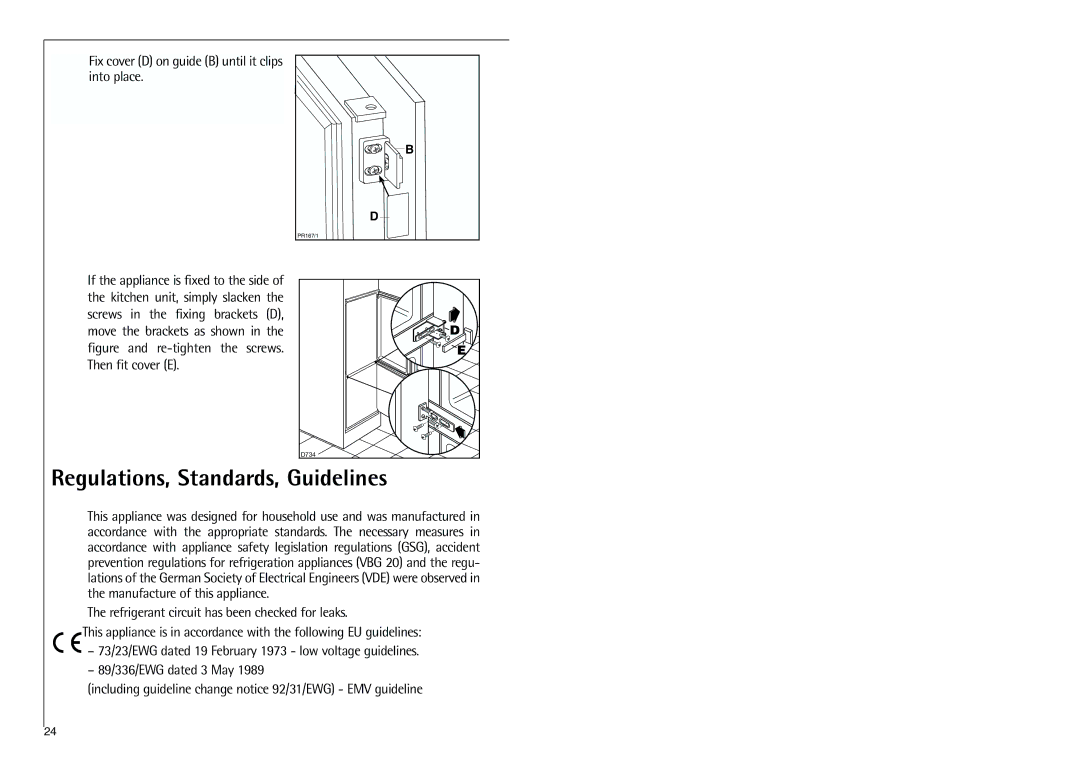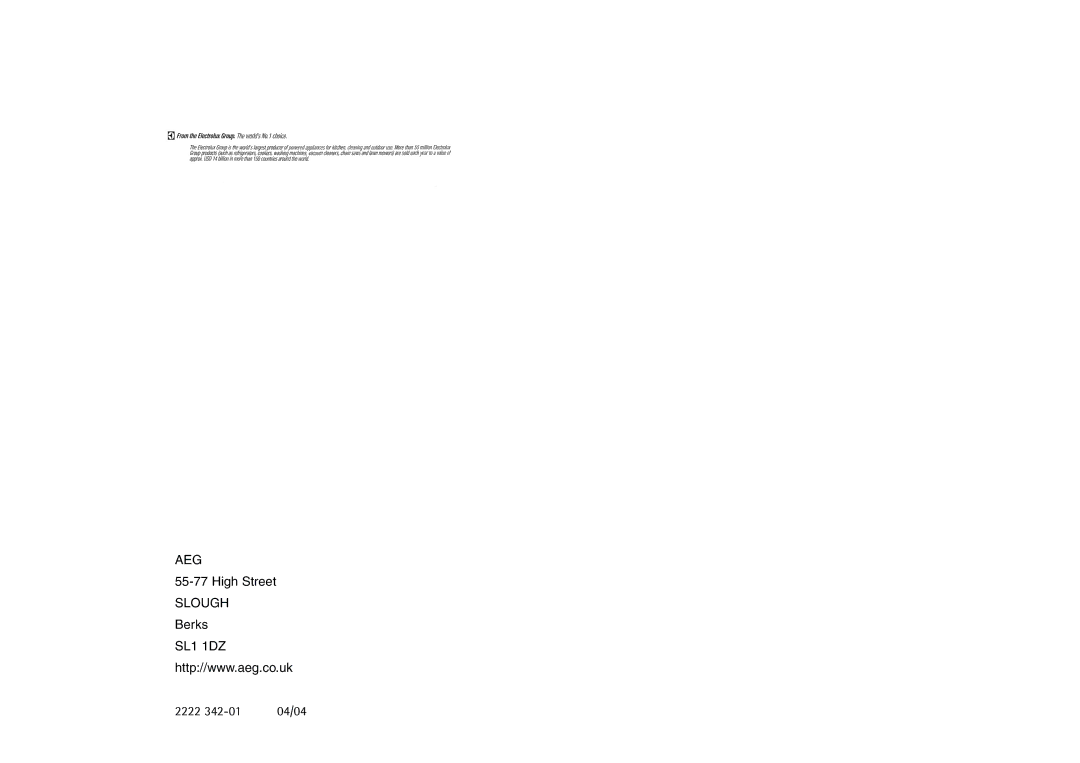
wrapped in aluminium foil or polythene bags to exclude as much air as pos- sible.
Milk bottles: these should have a cap and should be stored in the bottle rack on the door.
Bananas, potatoes, onions and garlic, if not in airtight containers, must not be kept in the refrigerator.
Freezing and Storing Frozen Food
You can use your freezer for freezing fresh food yourself.
Important!
•The temperature in the freezer compartment must be
•Please observe the freezing capacity given on the rating plate. The free- zing capacity is the maximum quantity of fresh food that can be frozen within a period of 24 hours. If you wish to freeze food several days in a row, please observe a maximum capacity of only 2/3 to 3/4 of that on the rating plate. The quality of the food is best preserved when it is frozen right through to the core as quickly as possible.
•Allow warm food to cool down before freezing. The warmth will cause increased ice formation and increase the power consumption.
•Please note the maximum storage times specified by the manufacturer.
•Thawed foods which have not been processed further (cooked into meals) may not under any circumstances be frozen a second time.
•Containers with flammable gases or liquids can leak at low temperatures. There is a risk of an explosion! Do not store any containers with flamma- ble materials such as, for example, spray cans, fire extinguisher refill car- tridges etc in the refrigerator/freezer.
•Bottles and cans must not be placed in the freezer. They can burst when the contents freeze, high carbonate content drinks can even explode! Never store lemonade, juices, beer, wine, sparkling wine etc. in the freezer.
•All foods must be packed air tight prior to freezing, so that they do not dry out or lose their flavour, and so that no flavour contamination of other frozen goods occurs.
•Ice cream or ice cream can caused 'frost/freezer burns if consumed strai- ght from the freezer.
Important! Do not touch frozen food with wet hands. Your hands could stick to the food.
9




